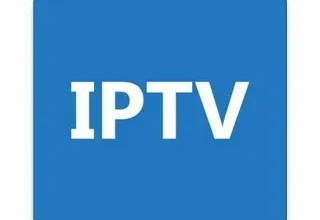Introduction
Writing a book is a labor of love, but the journey doesn’t end once the final word is written. One of the most crucial steps in bringing your literary creation to life is editing. However, many aspiring authors are left wondering, “How much does it cost to edit a book?” In this blog, we will explore the intricacies of book editing costs and unravel the often-misunderstood difference between editing and proofreading.
How Much Does It Cost to Edit a Book?
The cost of editing a book can vary widely, depending on various factors, including the type of editing, the length of the manuscript, and the experience of the editor. Let’s delve into these factors to get a better understanding of the costs involved:
Type of Editing:
There are different levels of editing, each serving a distinct purpose. The three primary types are:
a. Developmental Editing:
This is the most comprehensive and time-consuming type of editing. It involves improving the overall structure, plot, characters, and narrative flow of your book. Developmental editing is often the most expensive, and prices can range from $0.03 to $0.15 per word or more.
b. Copy Editing:
Copy editing focuses on grammar, spelling, punctuation, and consistency in style and language. This type of editing is less time-consuming than developmental editing but is still essential. Prices typically range from $0.01 to $0.03 per word.
Manuscript Length:
The length of your manuscript plays a significant role in determining editing costs. Longer books require more time and effort to edit, so the price will naturally be higher.
Editor’s Experience:
Experienced editors who have worked with well-known authors or publishing houses tend to charge higher rates. However, their expertise can make a substantial difference in the quality of the final product.
Urgency:
If you have a tight deadline, editors may charge a premium for expedited services. Rush jobs typically come at a higher cost.
Complexity of Content:
If your book deals with specialized or technical content, editors with expertise in that subject matter may charge more due to the additional research and knowledge required.
It’s important to note that these are general price ranges, and rates can vary widely. Authors should consider their budget, the quality they desire, and the specific needs of their manuscript when choosing an editor.
Difference Between Editing and Proofreading
Editing and proofreading are often used interchangeably, but they serve distinct roles in the writing and publishing process. Understanding the differences between editing and proofreading is crucial for ensuring that your book is polished to perfection.
Editing:
Comprehensive Review: Editing is a holistic process that involves a thorough examination of your manuscript. Editors assess content, style, structure, and language.
Enhancing Content:
Editors provide feedback on plot development, character arcs, pacing, and narrative flow. They may suggest restructuring, removing or adding content, and improving clarity.
Language and Style:
Editors ensure that your writing is consistent in terms of grammar, punctuation, and language usage. They may make substantial revisions to improve overall readability.
Developmental Editing:
This type of editing is concerned with the big picture, focusing on the story’s core elements. It addresses the “what” and “why” of your narrative.
Proofreading:
Surface-Level Review:
Proofreading is a final check that primarily addresses surface-level issues. It involves examining the text for spelling, grammar, punctuation, and typographical errors.
Formatting and Layout:
Proofreaders ensure that the text adheres to the established style guide and that formatting, such as font, spacing, and margins, is consistent.
Consistency Check:
Proofreaders make sure that the manuscript is internally consistent in terms of spelling, capitalization, and numbering. They also verify that references, citations, and cross-references are accurate.
Final Polishing:
Proofreading is the last step in the editing process, focusing on catching minor errors that may have been missed during earlier editing phases.
In essence, editing is a more comprehensive and content-focused process that can involve substantial revisions, while proofreading is the final check for errors and consistency. Both stages are essential for producing a polished and professional book, but they serve different purposes in the overall editing process.
Conclusion
As an author, understanding the cost of editing a book and the difference between editing and proofreading is vital to ensuring the quality and integrity of your literary work. While the cost may vary depending on the specific needs of your manuscript, the investment in editing is an investment in the success of your book.
Editing not only refines the content but also elevates the overall reader experience, making your book more compelling, error-free, and ready for publication. By distinguishing between the editing phases and being aware of the factors that influence costs, you can embark on your publishing journey with confidence and create a literary masterpiece that captivates readers.





